This is a story by Bo and Elizabeth Bollinger who took their 1999 Formula 34PC Fandango on a journey around the DelMarVa Loop at the end of September 2020. This journey was their longest on Fandango in over a decade, and it taught them a few lessons along the way. They share their lessons learned and experiences in this special three-part series.
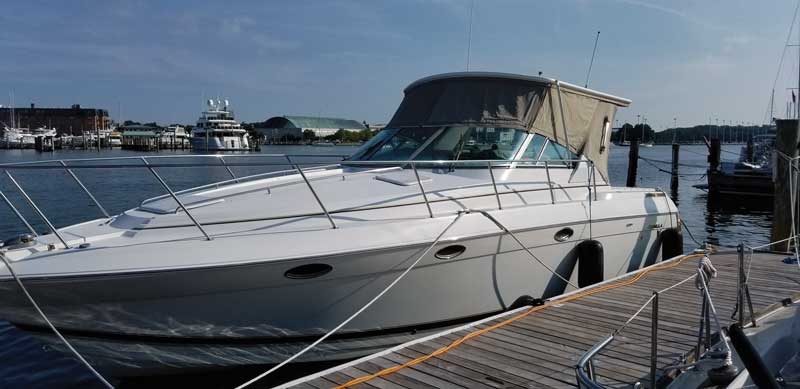
Sunday, September 27, 2020
Prelude… the engine mechanic replaced the alternators Saturday night and was working until 8:30 p.m. so that we could get underway the following day. He strongly suggested a sea trial before we loaded the boat and embarked up the Bay, so we took Fandango out that morning for a sea trial.
Fandango ran well, while burning about eight gallons of fuel, which would become important the following day…
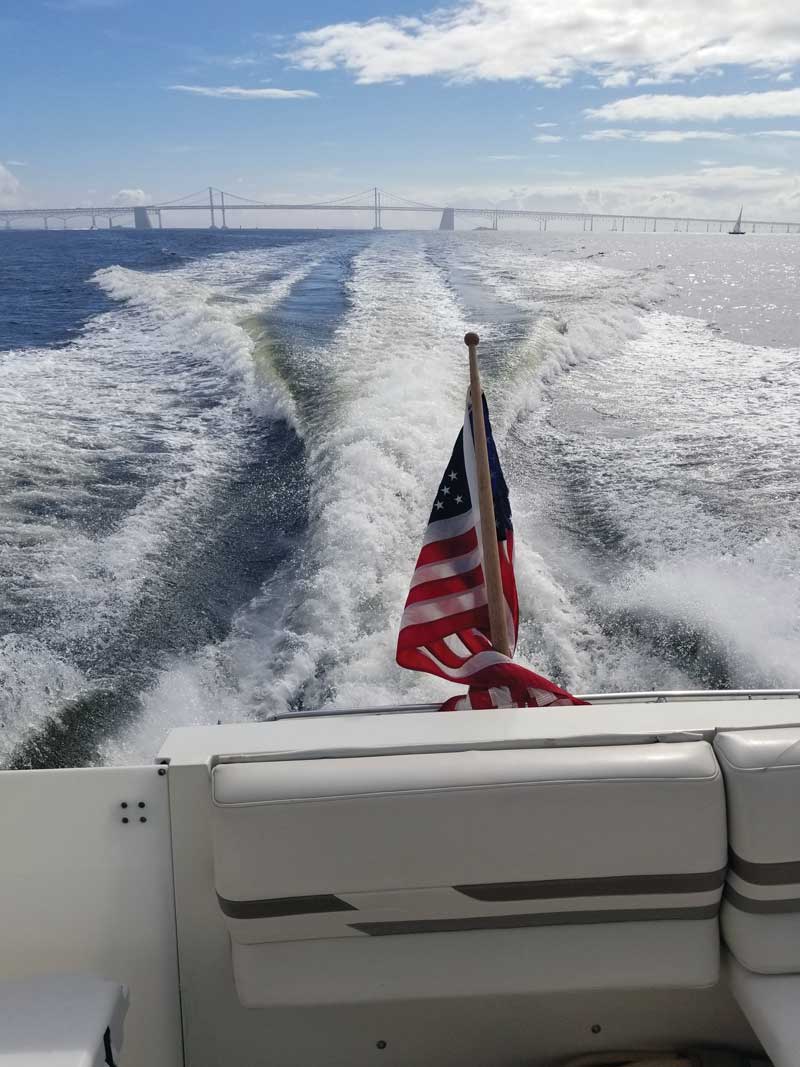
Chesapeake City, the First Leg
For the first leg of our journey after the sea trial, we spent most of the morning loading and organizing the boat with food, beverages, clothing, and musical instruments and departed on our journey from Annapolis at 2 p.m. for Chesapeake City. The seas were calm with a slight overcast sky.
On the journey north, the Bay continues to narrow like a funnel taking you to the Chesapeake & Delaware Canal. We arrived at 5 p.m. without much fuss and got the last slip on the Town Dock. The electric pedestal on the dock was not operating, but what do you expect for free? We toasted each other with a cold beer following the first leg of our journey.
The town was easy to walk as it is only three blocks by three blocks with a mix of historic homes, bed and breakfasts, boutique shops, and a restaurant or two. Back at the boat I suggested we enjoy dinner at the Bayard House Tavern on the C&D Canal. We ate outside on the lawn with plenty of social distancing and enjoyed a beautiful view of the C&D bridge and the water only feet away from our table. The entrées were expensive by our standards, so the waitress encouraged us to try their famous flatbread that had peaches, figs, spices, and goat cheese. We were lucky to take her up on the suggestion because it was fabulous. We ordered some wine and entrée-sized salads to complete the meal and both agreed that it was a great start to the trip. We had but a short walk back to Fandango, and thankfully, the quaint ice cream shop on the water had already closed for the evening.

Lewes, a Beautiful Place To Stay, Dine, and Enjoy
On the second leg of our journey we walked up to the town coffee and pastry shop for a large cup o’ joe and an egg sandwich. Topped off (with food not gas) we walked to the Chesapeake Inn & Marina to see party central on the canal. It has an incredible bar, and the slips have red or blue lighting to complement the cigarette boats that grace the docks at night. After begging the maintenance man to get us inside to use the toilets, we were on our way to Lewes, DE.
The canal was about 20 miles long at this point, and we easily cruised at 18 knots in calm waters before entering the (sometimes notorious) Delaware Bay. First mistake was leaving Chesapeake City without topping off our fuel tanks… The seas were about one foot on the nose in the Bay with occasional two-foot waves. The tide was against us for the first 10 miles or so but shifted to an ebb tide for the rest of our trip. We were greeted by the first pod of porpoises on the trip in the middle of the Bay, and several large cargo ships passed us northbound as we passed the monstrous Salem Nuclear Power Plant.
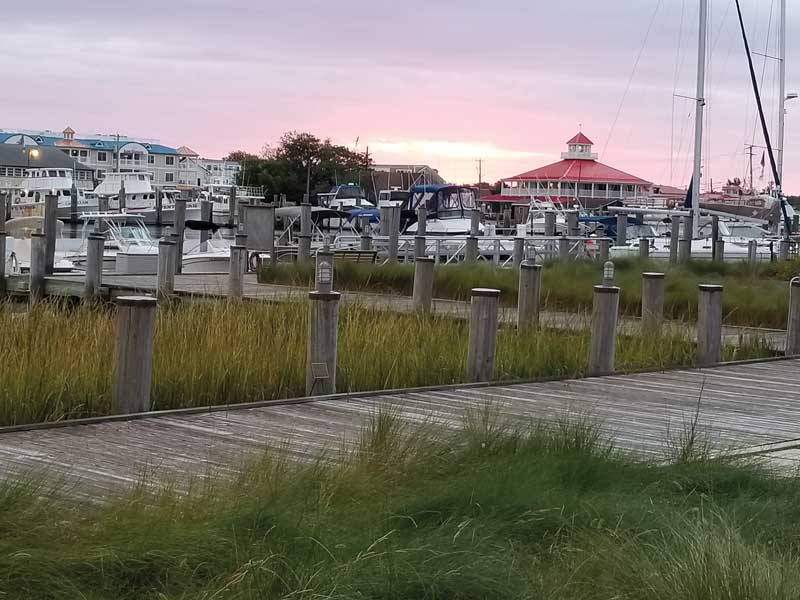
As we got close to Lewes, it was becoming apparent that we were low on fuel. I made the decision to reduce speed to eight knots for a lower fuel burn rate the last 10 miles of the trip to stretch our fuel supply. About midway into the channel, the port engine ran out of fuel. We were now on one engine looking for the first open fuel dock.
Turning 90 degrees to port up the channel, we were fighting a strong ebb tide while cruising at five knots in order not to make a wake. We were informed that Anglers had the only fuel, and the Admiral (my wife Elizabeth) was positioned on the starboard side of the boat to use the piling as a pylon to pivot as we backed into the slip with only the starboard engine and an ebb tide pushing the bow downstream. Safely into the fuel slip, we turned off the one engine and began the fueling process taking on 204 gallons into the 220-gallon tanks. Remember the fuel burned in the sea trial the previous day? It came back to haunt us.
I asked one of the fishermen on the dock if he knew how to bleed a fuel injected gas engine (most have diesels on their boats). He said he couldn’t help me, but he did give me the name of a mechanic in town for assistance. I called our mechanic back on Kent Island, and he instructed me on what to do. It actually isn’t that complicated, much like bleeding air out of a car tire, but with gasoline coming out instead of air. We were successful, much to the amazement of one of the old guys on the dock sipping on a can of beer. With both engines running we motored back up the canal to the Town Dock and tied up. I hosed off the boat and plugged in the power cord while the Admiral straightened up below.
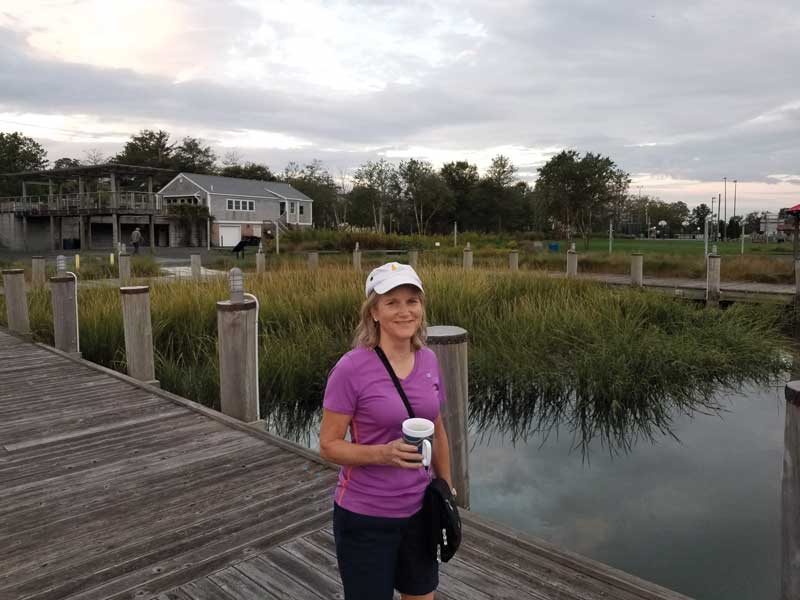
We were soon greeted by a nice city dock master who took our information and credit card. He said we were lucky to get the slip since a 50-foot catamaran had just departed a couple of hours ago. He told us we needed to walk two blocks to the bath house and how to get to the liquor store, all useful information. The showers were nice, but not well marked from the street, so we ended up doubling the walk before we found them. All part of the journey as we got to see this lovely park with a baseball field, tennis courts, beautiful plantings, and floating docks. We hit the liquor store on the way back to the boat to pick up a bottle of wine for our Annapolis friends who had moved to Lewes and were going to join us for dinner.
Peter O’Brien came to our boat and enjoyed a sundowner before taking us on a tour of their new home, which was only 10 minutes from downtown Lewes, and catching up on old times. We headed back to town and made reservations at Agave. While waiting for a table we took the time to make a short three block trip to the beach to watch the sunset and the moon rise, while listening to the waves lap against the shore. The warm October air and gentle ocean breeze made for a spectacular picture on the beach.
The dinner at Agave was very good, with roasted corn smothered in queso for an appetizer, followed by everyone’s favorite Mexican dishes. This place is very popular, crowded, and worth it. After a long day underway and at the gas dock, we were more than ready to hit the sack and enjoy a long night’s sleep safely tied to our floating dock in the middle of Lewes. The town is truly a wonderful and beautiful place to stay, dine, and enjoy for a very relaxing weekend… or life.
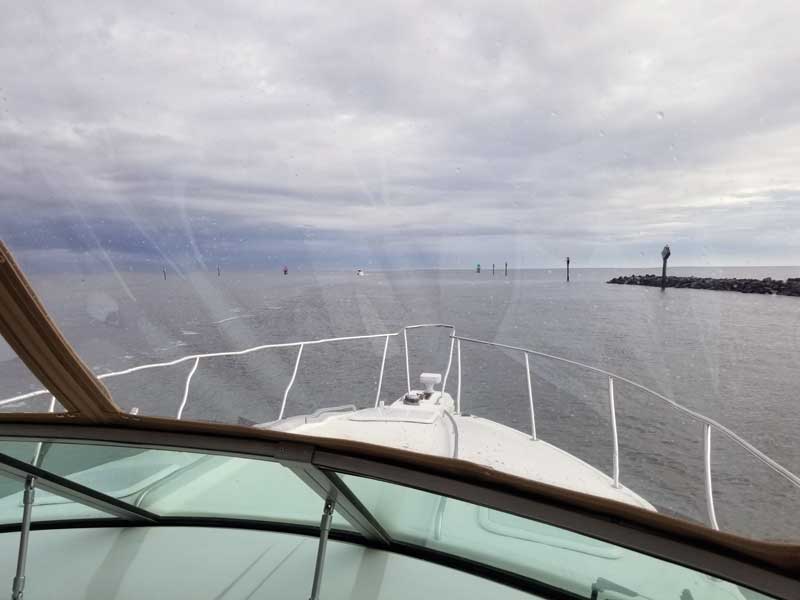
Open Ocean Cruising to Ocean City
The next morning, we decided to get underway to try and beat the wind gods on our journey to Ocean City. We pulled into the gas dock to get a bag of ice, and the port engine quit on us... We got the ice and went back on one engine to the Town Dock when who should show up, but our good friends the O’Briens to wish us bon voyage. We chatted while we made additional attempts to start the motor, which we were eventually successful in doing. Thankfully the air lock was purged. We said our goodbyes again and headed out of the canal for Ocean City and our first real serious cruising in the open ocean.
The ocean swells of three feet were from the southwest, and the seas were coming from the southeast with waves of one to two feet, both converging on our nose. It was about a two-hour trip to Ocean City, and the Admiral was not feeling that great during this leg of the trip (little did she know it would get worse). We turned west to enter the Ocean City channel and with a strong ebb tide, the waves were stacking up at three to four feet at the entrance. Hammer time as we plowed through at a purposeful speed to maintain way and control through the narrow inlet.
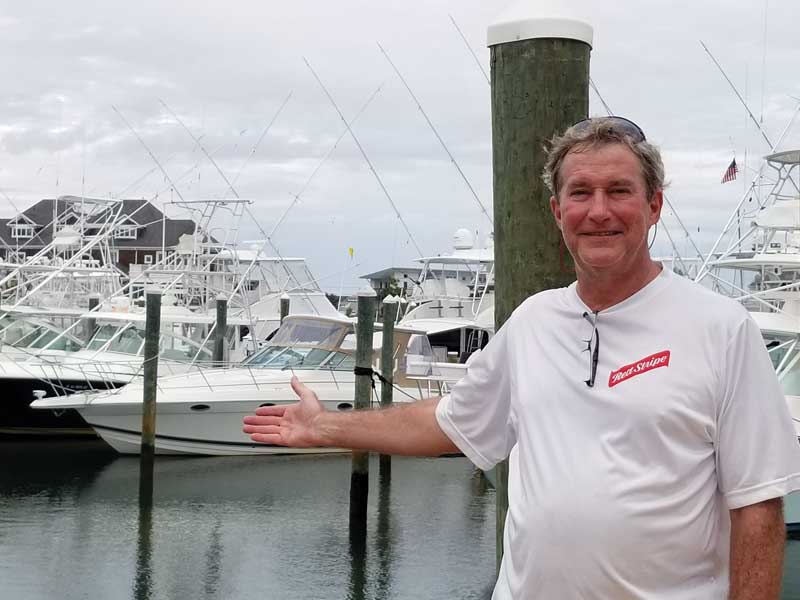
We headed across the sound to the Sunset Marina after a brief side trip up the back side of Ocean City, which is not where a recreational cruiser would want to stay. We turned around at the bridge and headed back to the entrance channel and turned west to Sunset Marina. This is a very large marina with multiple fuel docks. They finally gave us proper directions to a gas dock (versus diesel). We were warmly greeted by a young man named Gavin who is going to Salisbury State and who was exceptionally professional and courteous. He directed us to our slip back at the entrance of the marina (pier A which none of the piers had letters on the end… go figure). We were docked in battlewagon heaven. There were more multi-million tuna and billfish boats than you can imagine all being cleaned, worked on, or waiting for their owners. Quite a site indeed.
We checked in at the front office, and the ladies were very attentive to our needs and questions about the marina. Turns out Sunset Marina is managed by Brian Tinkler, the brother of Scott Tinkler who manages Port Annapolis Marina (small world). This marina was in a league of its own, but basically empty of people. Three swimming pools, the world famous Teasers Bar and a huge outdoor dining area, plus a stage elevated 10 feet in the air to ensure everyone gets to see and hear the band. FYI, don’t get a slip on D dock if you don’t like loud band music at night.

We had a nice long walk around the well-manicured and landscaped marina grounds (always a favorite for the Admiral to check-out) before returning to the boat for a brief keyboard concert by the Admiral before gathering our shower gear and a much appreciated bath. The bathrooms were clean, large, and very comfortable.
That evening we listened to the wind howling through the tuna towers of the neighboring boats as we dined on the grilled chicken and stuffed baked potatoes we had brought on our trip. We went to sleep hoping the winds would die down and give us a smooth trip in the morning. It didn’t exactly go as planned…
Stay tuned for Part II of this DelMarVa Loop story in our January issue. Next up, Chincoteague, the Onancock river, and the Choptank River.
By Bo and Elizabeth Bollinger